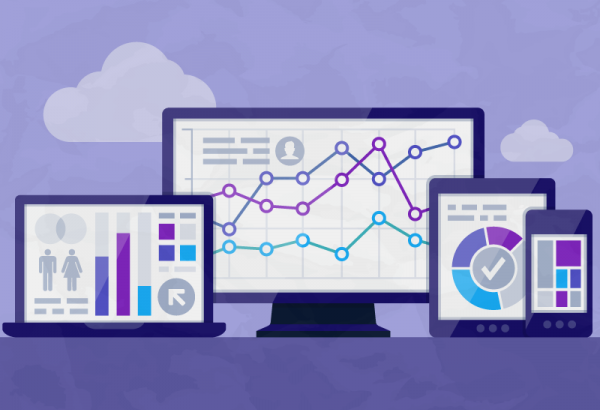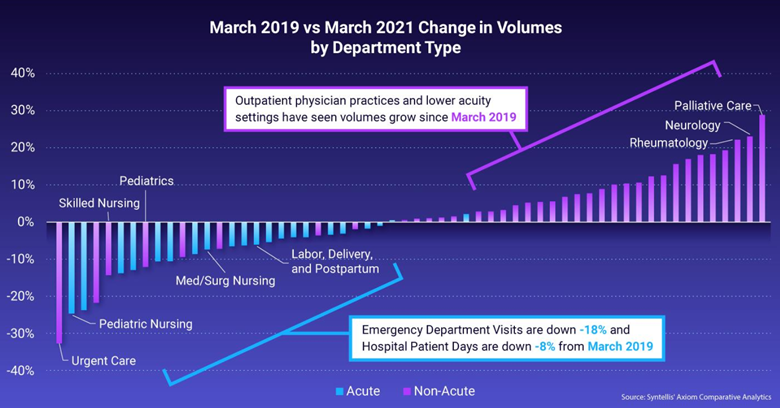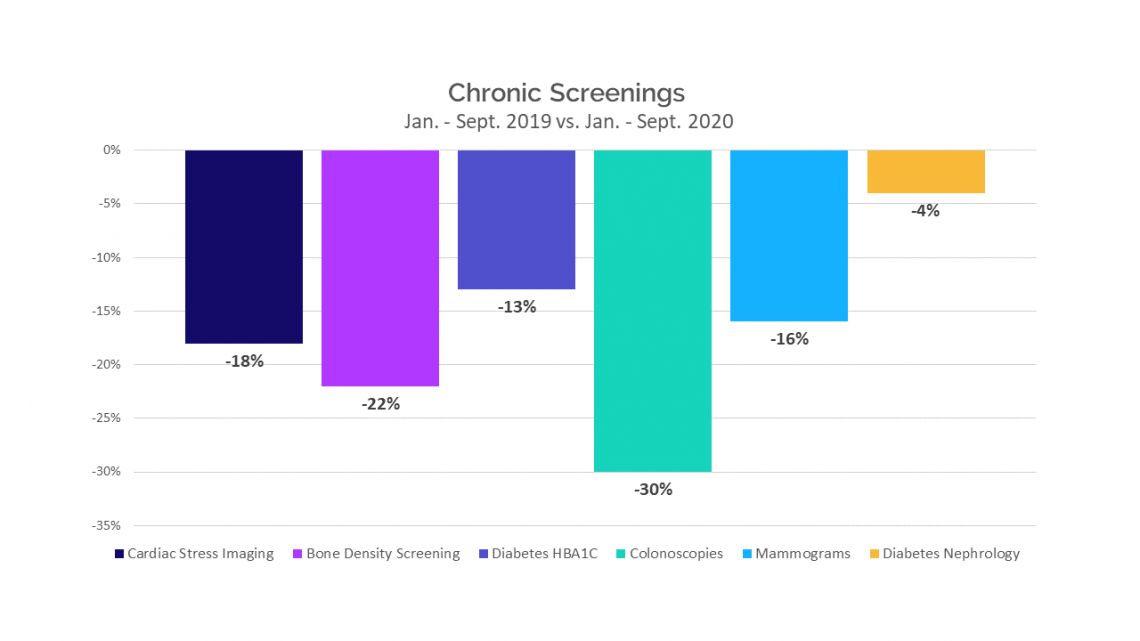After a whirlwind year of healthcare challenges, finance teams are scrambling to better understand current and future operations. It’s not a question of whether hospitals and health systems have the data needed to derive insights — the question is whether that data is integrated among source systems and in a format that supports actionable decision-making.
Enterprise decision support is a critical tool for hospitals, health systems, and physician practices, as 82% of finance leaders cite cost management and reductions as very important to helping their organizations maintain or rebuild their fiscal health in the pandemic’s wake.
Three-quarters said their organization should be doing more to leverage financial and operational data to inform strategic decisions. Yet, more than two-thirds (68%) do not have advanced decision support solutions that provide a high degree of confidence in performance tracking and management.
The planning disruption and uncertainty related to COVID-19 demonstrated to finance leaders that data-driven decision-making is the best path forward for their organizations.
Effectively using decision support solutions to make better decisions requires healthcare organizations to take four key steps:
- Introduce next-generation cost accounting capabilities (Part 1 of this blog series)
- Establish a cloud-based platform that can scale to meet the needs of large enterprise organizations (Part 2)
- Deliver actionable data to a broad set of stakeholders(Part 3)
- Guide planning by evolving analytics from retrospective to predictive
Part 4 of this blog series focuses on how robust enterprise decision support software can help an organization leverage its data and the importance of evolving analytics from retrospective to prospective and even to predictive.
Defining the New Normal
Like other sectors of the economy, the continuing impact of the pandemic on healthcare has yet to be determined. Certainly, indicators are moving in the right direction, but no one knows what the new normal will look like in terms of overall volume and case mix. Based on the current state of recovery, many of the trends seen pre-COVID-19 appear to be accelerating.
Recent market data, comparing 2019 volumes to 2021, indicates that case volumes (Figure 1) for acute services aren’t rebounding as quickly as non-acute services, which are broadly exceeding 2019 levels. This data suggests that the traditional approach to financial and operational planning — where scenario modeling is based on minor incremental changes to historical run rates — may no longer accurately predict future activity.
The demand for robust healthcare analytics to inform planning decisions continues to grow, accelerated by the need to establish a new normal. Collecting and analyzing data as close to real time as possible moves organizations from a retrospective to a prospective view, with the ultimate goal of accurately predicting impacts of service line or service level changes.
3 Capabilities Vital to Decision Support Success
As finance teams explore planning tools and processes to increase accuracy and efficiency, evolving decisions from retrospective to prospective, three capabilities are vital to future success:
#1 — Unified Planning and Decision Support Tools
The overall goal for decision support tools is to establish an accurate picture of costs and utilization at the encounter level, then perform meaningful analysis across various patient cohorts or clinical service lines. Although valuable, the data is retrospective by definition. Finance teams need the ability to turn this data into a prospective view that translates how shifts in service line volumes and mix will impact resources and workload demand. Seamlessly integrating these impacts as part of driver-based planning models can significantly improve forecasting accuracy and efficiency.
#2 — Timely Insights to Market Data and Trends
What defines the “new normal” for any hospital or health system continues to evolve. Important planning inputs include the pace and degree to which changes occur. Finance teams will benefit from timely market data and regional snapshots of how conditions are changing.
During COVID-19, a significant drop in preventive screenings occurred across service lines (Figure 2), including colonoscopies, cardiac stress imaging, and mammograms. As volumes pick up, two questions remain: Will service levels return to pre-pandemic, and if so, when? Will the incidence of acute cases increase because of reduced screenings during the pandemic?
#3 — Scenario Planning and What-if Modeling
Given the planning uncertainty that exists in healthcare today, finance teams recognize the necessity of efficiently modeling scenarios and alternative views of the future.
During the pandemic, many organizations discovered the need for rolling forecasting, which gained popularity among finance teams to forecast based on current and evolving market conditions. When used in conjunction with decision support tools, rolling forecasting helps organizations model various scenarios and perform “what-if” simulations to quantify the financial impact of potential business scenarios and proactively plan for any necessary course corrections.
Scripps Health recognized the need early, adopting a rolling forecast that reduced forecasting time by 47%, consolidated three budgeting modules into one, and powered analysis by generating five key reports for each department. “We knew that we needed to pivot quickly because shifts in declining payer mix and reimbursement trends were happening too quickly to wait around for an annual midyear forecast and budget process,” says John Wong, Director of Corporate Financial Planning & Reporting at Scripps Health.
Understanding the Value of Analytics
The demand for robust healthcare analytics to inform planning decisions continues to grow, accelerated by the need to pivot post-pandemic and establish a new normal. Collecting and analyzing data as close to real time as possible moves organizations from a retrospective to a prospective view, with the ultimate goal of accurately predicting impacts of service line or service level changes.
Decision support tools are critical, connecting organizational data with core planning solutions and external market data to give leaders a complete picture of their organizations and insights needed to chart a better path forward.
Axiom™ Comparative Analytics works with Axiom™ Enterprise Decision Support to give you the internal and external data you need to make data-driven decisions. External data includes financial, payroll, and labor utilization metrics from 500+ unique departments across more than 1,000 hospitals, including data at the system, region, location, and department level – all updated monthly.
Read more from this series:

Strategic Decision Support, Part 1: Next-Generation Cost Accounting

Strategic Decision Support, Part 2: Benefits of a Cloud-Based EPM Solution




